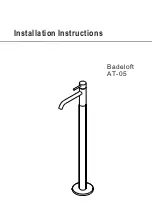
E2S Warning Signals
Impress House, Mansell Road, Acton, London W3 7QH
www.e2s.com
Tel: +44 (0)208 743 8880
Document No. D199-00-621-IS
Issue 2
27-10-22
Sheet 3 of 15
The certification approval has validated continuous use up to
38°C ambient and are for transient use up to 70°C ambient.
Installation must be carried out in compliance with the National
Electric Code / Canadian Electric Code.
4) Zones, Gas Group, Category and
Temperature Classification
The units can be installed in locations with the following
conditions:
Area Classification
Zone 1
Explosive gas air mixture likely to occur in
normal operation.
Zone 2
Explosive gas air mixture not likely to occur in
normal operation, and if it does, it will only exist
for a short time.
Zone 21
(ATEX / IECEx & UKEx
only)
Explosive dust air mixture likely to occur in
normal operation.
Zone 22
(ATEX / IECEx & UKEx
only)
Explosive dust air mixture not likely to occur in
normal operation, and if it does, it will only exist
for a short time.
Gas Groupings
Group IIA
Propane
Group IIB
Ethylene
Group IIC
Hydrogen and Acetylene
Temperature Classification for Gas Applications
T1
450ºC
T2
300ºC
T3
200ºC
T4
135ºC
(STExB2X10DC & STExB2X15DC up to 70°C
ambient)
T5
100ºC
(STExB2X05DC up to 70°C ambient;
STExB2X10DC up to 45°C ambient)
T6
85ºC
ATEX / IECEx / UKEx:
(STExB2X05DC up to 55°C ambient)
NEC / CEC:
Up to 65°C ambient
Dust Groupings
(ATEX / IECEx & UKEx only)
Group IIIA
Combustible Flyings
Group IIIB
Non-conductive Dust
Group IIIC
Conductive Dust
Maximum Surface Temperature for Dust Applications
(ATEX / IECEx & UKEx only)
STExB2X05DC-S
92ºC
STExB2X10DC-S
118ºC
STExB2X15DC-S
127 ºC
Equipment Category
2G / 2D
Equipment Level Protection
Gb, Gc, Db, Dc
Ambient Temperature Range
-50°C to +70°C
IP Rating
IP6X to EN/IEC60079-0
IP66 to EN60529
5) Special Conditions for Safe Use
Repair of the flameproof threaded joints and cemented joints
is not permitted.
Figure 1: Flame Path.
The metallic enclosure has a non-conductive coating. These
may generate an ignition-capable level of electrostatic charges
under certain extreme conditions. The user should ensure that
the equipment is not installed in a location where it may be
subjected to external conditions that might cause a build-up of
electrostatic charges on non-conducting surfaces.
All entries must be fitted with a suitable seal at the interface
with enclosure.
6) Product Mounting and Access
6.1. Location and Mounting
The location of the beacons should be made with due regard
to the area over which the warning signal must be visible. They
should only be fixed to services that can carry the weight of the
unit.
The STEx beacons should be securely bolted to a flat surface
using 9.0mm diameter bolt holes in the base of the unit. See
figure 2.
Figure 2: Fixing Location for B2 Beacon.




































